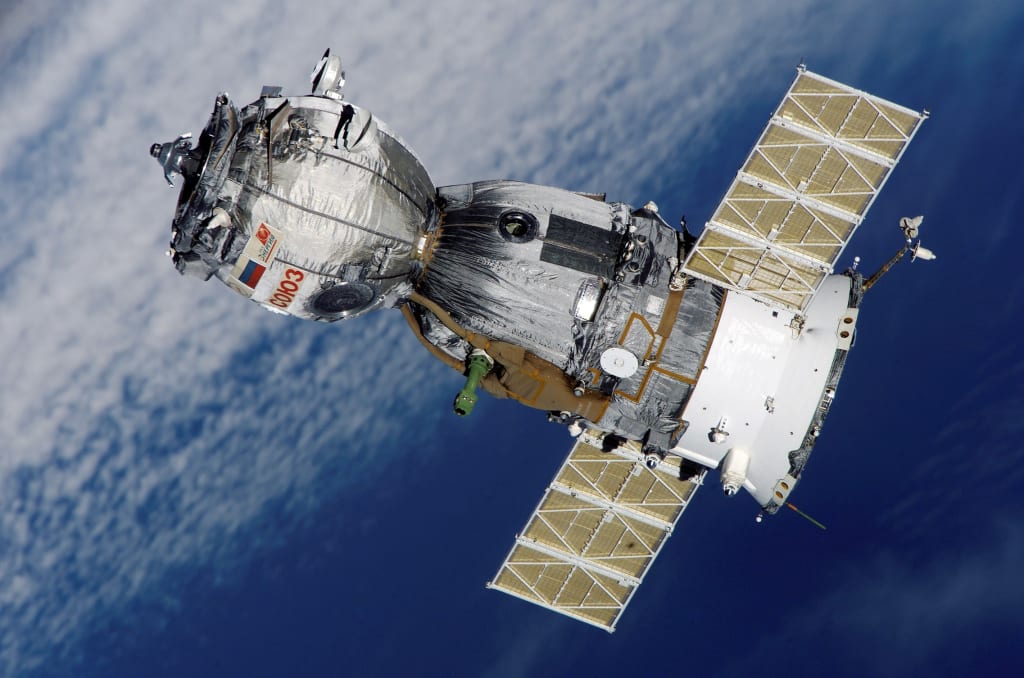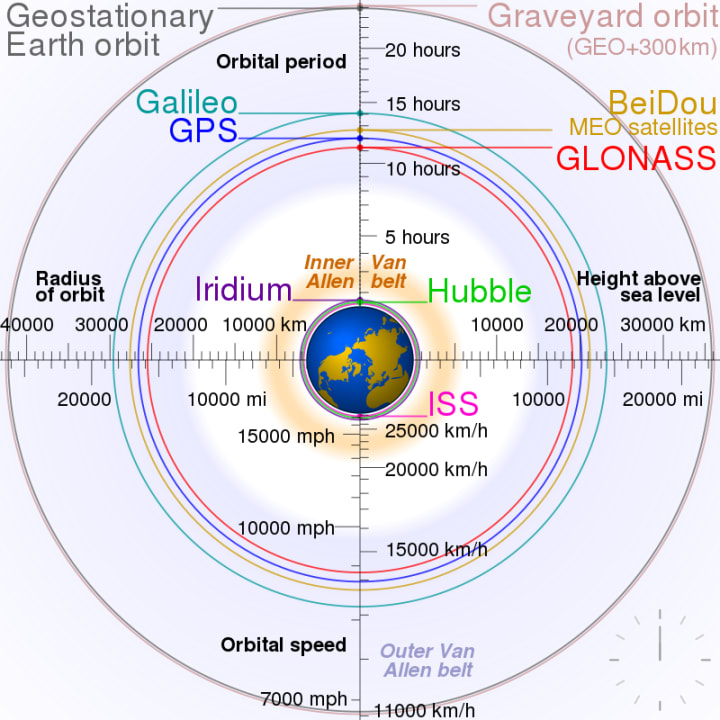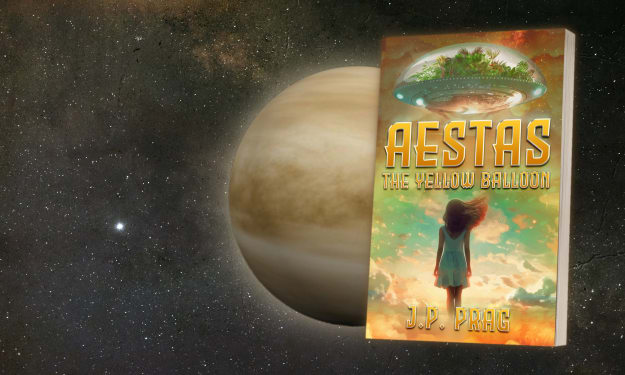Rocketing Towards the Dreaded Kessler Syndrome
Earth has a space junk problem. The amount of debris from the collisions of rocket parts and defunct satellites is growing, bringing us closer to the Kessler Syndrome, in which launching new spacecraft and satellites is too risky.

On 15 October 2020, scientists watched in fear as a 16-foot long inoperative Russian navigation satellite and part of a 25-foot long Chinese rocket whizzed passed each other at 33,000 miles an hour, more than 600 miles above the southern Atlantic Ocean. Had they collided, the debris cloud would’ve been large enough to put every other spacecraft and satellite in low Earth orbit at risk.
These types of near-miss events happen multiple times a year, but occasionally collisions do occur. Back in 2009, a communications satellite struck a Russian military satellite somewhere above Siberia, resulting in some 18,000 pieces of debris that are still tracked today, including orders of magnitude more that cannot be tracked. Even the tiniest of these pieces, like a fleck of paint, can be enough to put a spacecraft or satellite out of order, considering the speeds they travel. NASA estimates space junk is “moving very fast and can reach speeds of 18,000 miles per hour, almost seven times faster than a bullet.
Because of this, back in 1978, NASA engineer Donald Kessler theorized a worse case scenario, now called the Kessler Syndrome. He worried that a small amount of debris would collide with other debris, satellites, or spacecraft, causing even more and smaller debris, which would then collide with other objects in low Earth orbit, causing even more debris. The Earth would eventually be surrounded by a debris field, rendering sending new objects into space impractical. We’d be trapped by our own space garbage.
“Imagine how dangerous sailing the high seas would be if all the ships ever lost in history were still drifting on top of the water,” says ESA Director General Jan Wörner.
How Close Are We to the Kessler Syndrome?
As of now, nearly 3,000 manmade objects are in low Earth orbit, which is less than 1,200 above the surface. However, NASA’s Orbital Debris Program estimates that there are 500,000 marble-sized pieces of debris and 100,000,000 pieces less than 1 millimeter currently in low Earth’s orbit as well. Because of this, it’s been dubbed the world’s largest garbage dump. To give you some idea of how crowded it is out there, take a look at this simulation.
While some pieces of debris are in decaying orbits and will burn up in the atmosphere, it’s likely to get worse due to the rapid increase of satellites planned for launch. One major cause for concern is Elon Musk’s Starlink project. By conservative estimates, this project to provide the internet via satellites will need 4400 of them, but it could require as much as 12,000, over 4 times what we have now.
Kessler himself believed a massive 18,000 pound defunct European Space Agency satellite named Envisat is likely to be the trigger for the Kessler syndrome. Every year multiple objects pass within a few hundred feet of it. It might only take 1 collision to set in motion the cascade of debris causing more debris that he envisioned.
How Do We Avoid the Kessler Syndrome?
Graveyard Orbits: These are stable orbits well outside of those used by humans, meaning satellites and spacecraft can be safely parked there. The most used graveyard orbit is 22,400 miles above sea level. Scientists may decide to send a dying satellite here because it’s too large to burn up in the atmosphere or because it’s already in a nearby orbit so it’ll use less fuel to get it there. Once in the graveyard orbit, it is likely to be there for millions of years with no threat to usable satellites and spacecraft.

However, there are no international laws mandating a company or an organization bury their satellites in a graveyard orbit. The closest things we have is a set of voluntary guidelines published by the United Nations Committee on the Peaceful Uses of Outer Space in 2007. In the US, the Federal Communications Commission requires an approved plan for sending satellites to a graveyard orbit before they’ll grant a license to broadcast. Other space faring nations have similar regulations, though some are better than others.
Atmospheric Reentry: For small and low orbit satellites, scientists may send them into the atmosphere by using the last of their fuel to slow them down, forcing them into a decaying orbit. The intense friction during reentry results in temperature approaching 3000 degrees F, more than enough to destroy most components. If a satellite is likely not to be completely destroyed during reentry, it can be aimed at the Spacecraft Cemetery, a commonly used remote location in the southern Pacific Ocean. Former space station Mir was buried here.
The rule at the moment is that a defunct satellite must be forced into a decaying orbit that’ll destroy it in 25 years or less. However, this rule is not a law and is often disregarded. Some organizations like the Space Safety Coalition have enacted a 5 year rule, although they have little enforcement power.
Tracking: Major space agencies have stepped up their tracking efforts, but private companies seem to be the best way forward. For example, Silicon Valley based LeoLabs uses ground-based satellites in Alaska, Texas, and New Zealand to track objects up to 2 cm. They will soon have satellites in Costa Rica and 2 other yet to be named locations.
Cofounder Ed Lu said “With this radar we will have the capability to provide collision-avoidance services for objects too small to be currently tracked.”
While knowing where the space junk is will help space agencies and companies avoid it, debris too small to track still poses a major threat and orbiting objects cannot change their trajectory so easily.
Hunting and Capturing: Scientists are developing a variety of satellites and spacecraft that are specialized in capturing, destroying, or redirecting orbital debris.
One idea tried by Japan was to use a giant net to capture space junk, although this was declared a failure. Launched in 2018, the ESA tried a similar idea with their RemoveDEBRIS mission, which put two small satellites into low Earth orbit. Each was equipped with both a net and a harpoon. Likewise, there are numerous plans for satellites and spacecraft armed with remote controlled robotic arms. Once captured, the debris can be redirected or even recycled.
Both NASA and the ESA are pushing forward with fully autonomous spacecraft that might play a pivotal role in preventing the Kessler Syndrome.
Lasers: Some scientists have suggested both ground-based and orbiting lasers to target large pieces of debris. One part of this idea is that the laser would heat one side of the object, causing it to vaporize. This would produce a thrust in one direction that should be enough to destabilize its orbit and send it into the atmosphere. The other part of the idea is that the laser’s momentum, although small, should be enough over long periods of time to push objects into safer orbits.
Pushing Through the Great Filter
In the summer of 1950, famed physicist Enrico Fermi casually wondered out loud where all the aliens were. He reasoned that the universe should be heavily populated with other civilizations given its size and age, yet we have no credible evidence that they exist.
Among the many answers to this question, known as the Fermi paradox, is that life must go through a series of filters to survive and evolve to the point that interstellar communication is possible. For example, for an advanced civilization to develop, they would need to first be within the habitable zone of their parent star. If not, life might exist, but it will struggle to evolve. A more advance example is that a civilization must not destroy itself, such as through mismanagement of its resources. Therefore, life might be common in the universe, but it’s either not advanced enough to detect or it’s already dead, possibly by its own hands.
Perhaps the Kessler Syndrome is one of these filters. Perhaps for a civilization to continue to advance and colonize other planets it needs to responsibly manage its orbital debris. If they don’t, they may trap themselves in a blanket of their own garbage.
About the Creator
The Happy Neuron
Stimulating articles to make your brain happy. http://thehappyneuron.com/






Comments
There are no comments for this story
Be the first to respond and start the conversation.